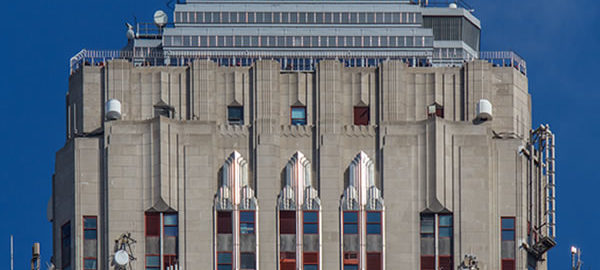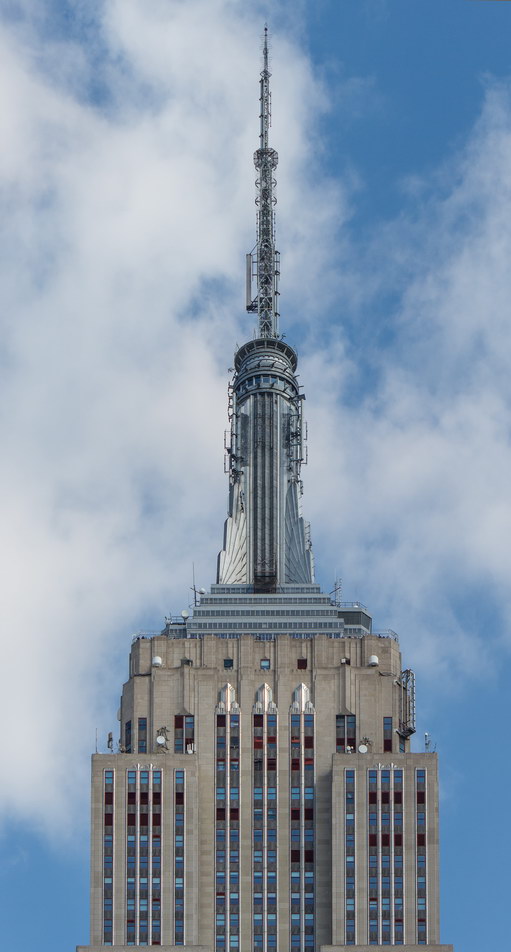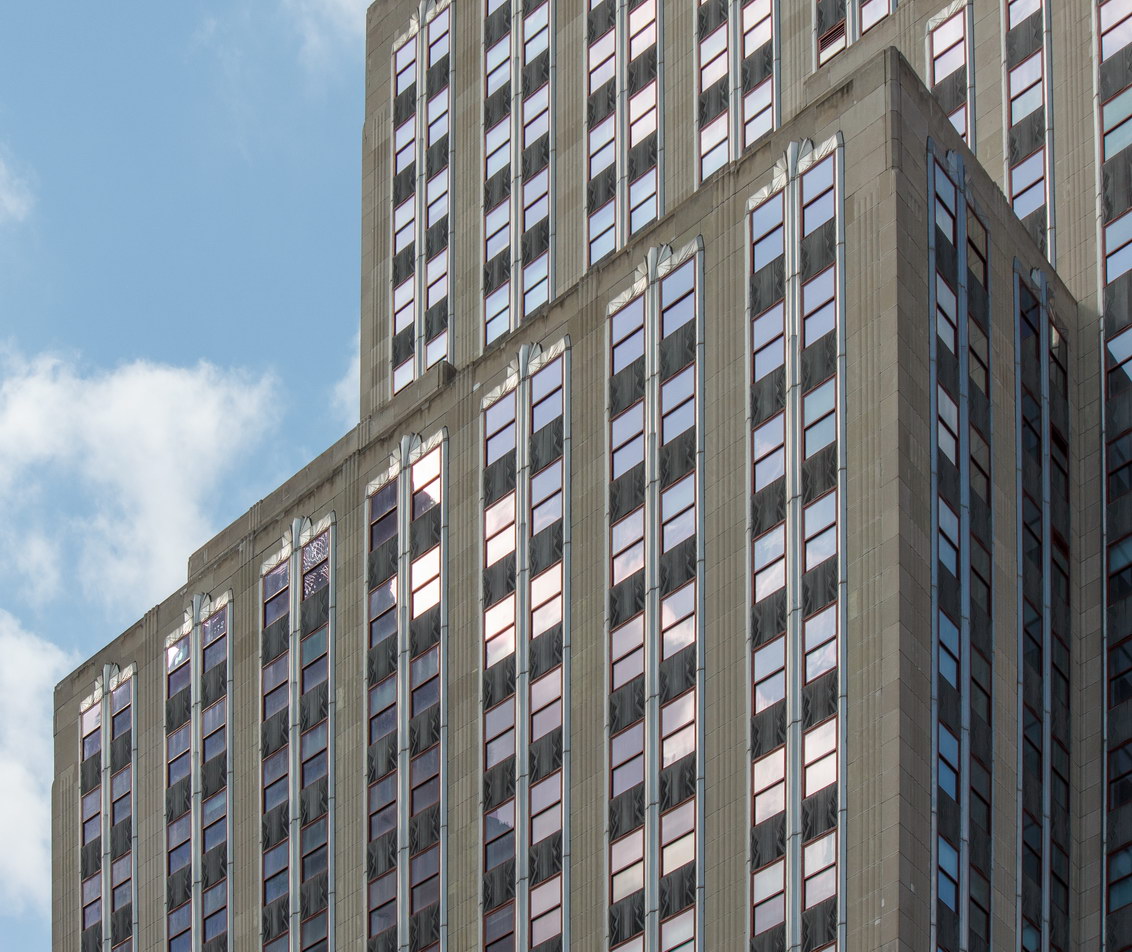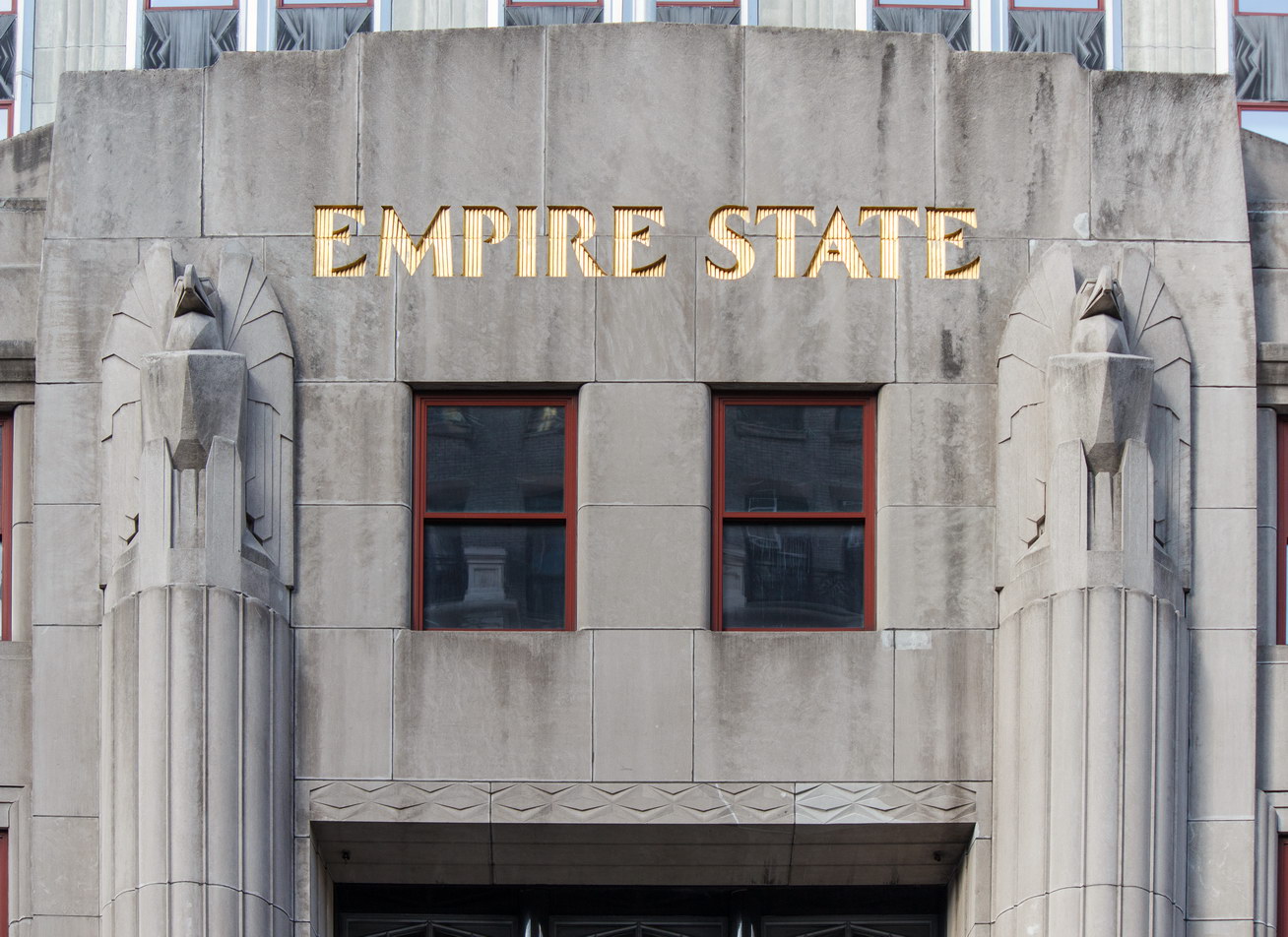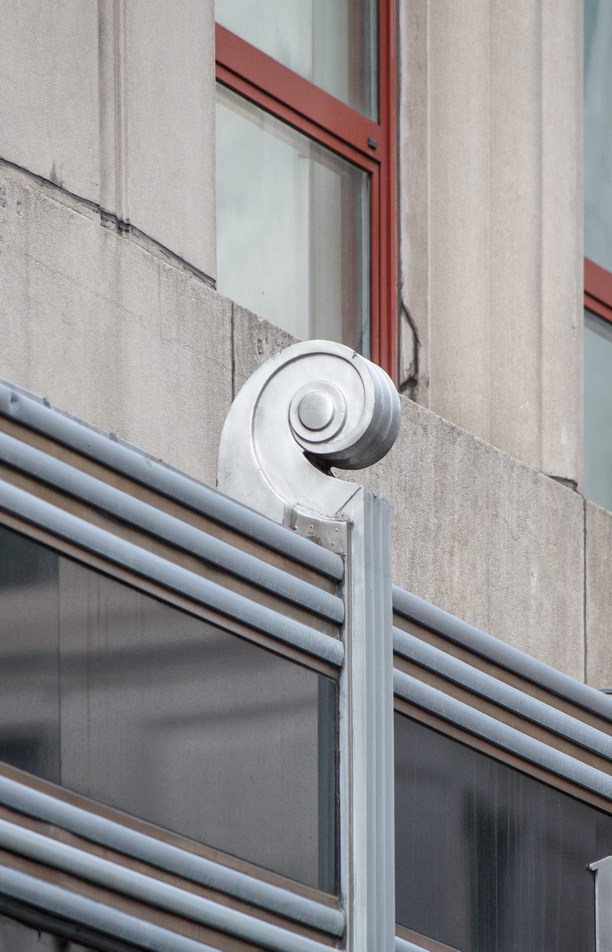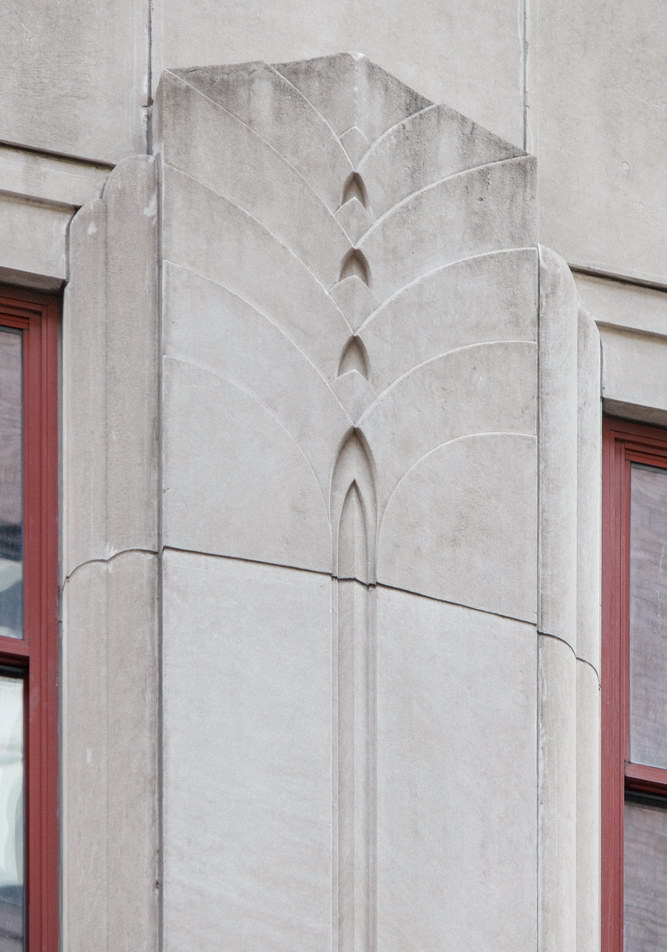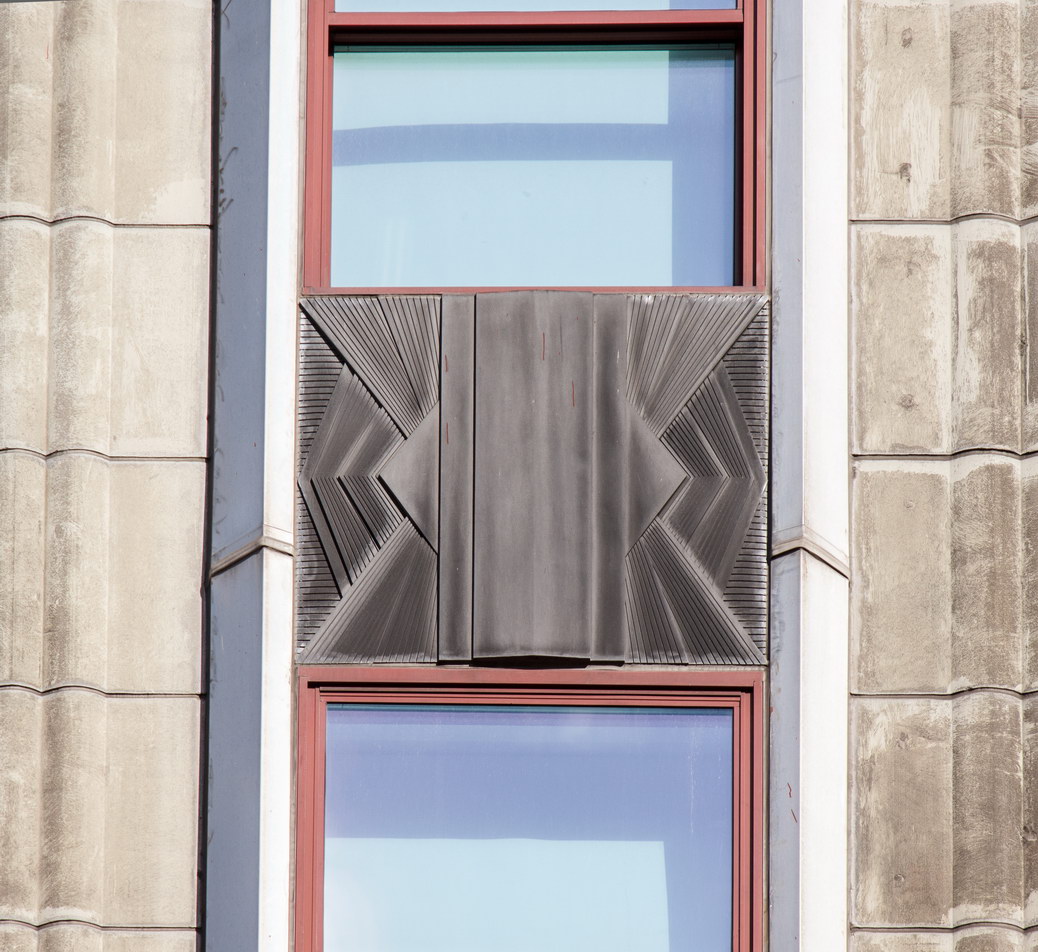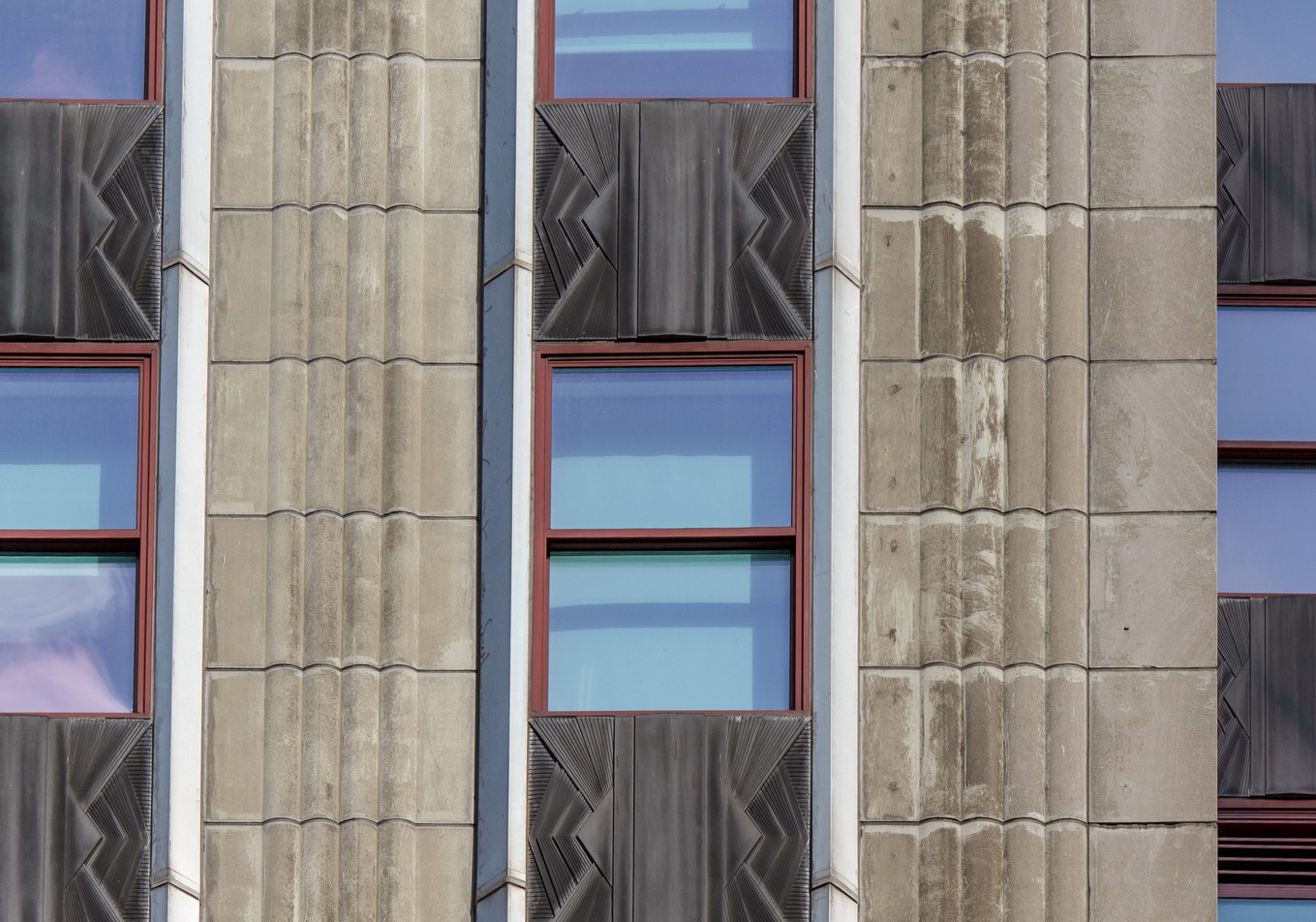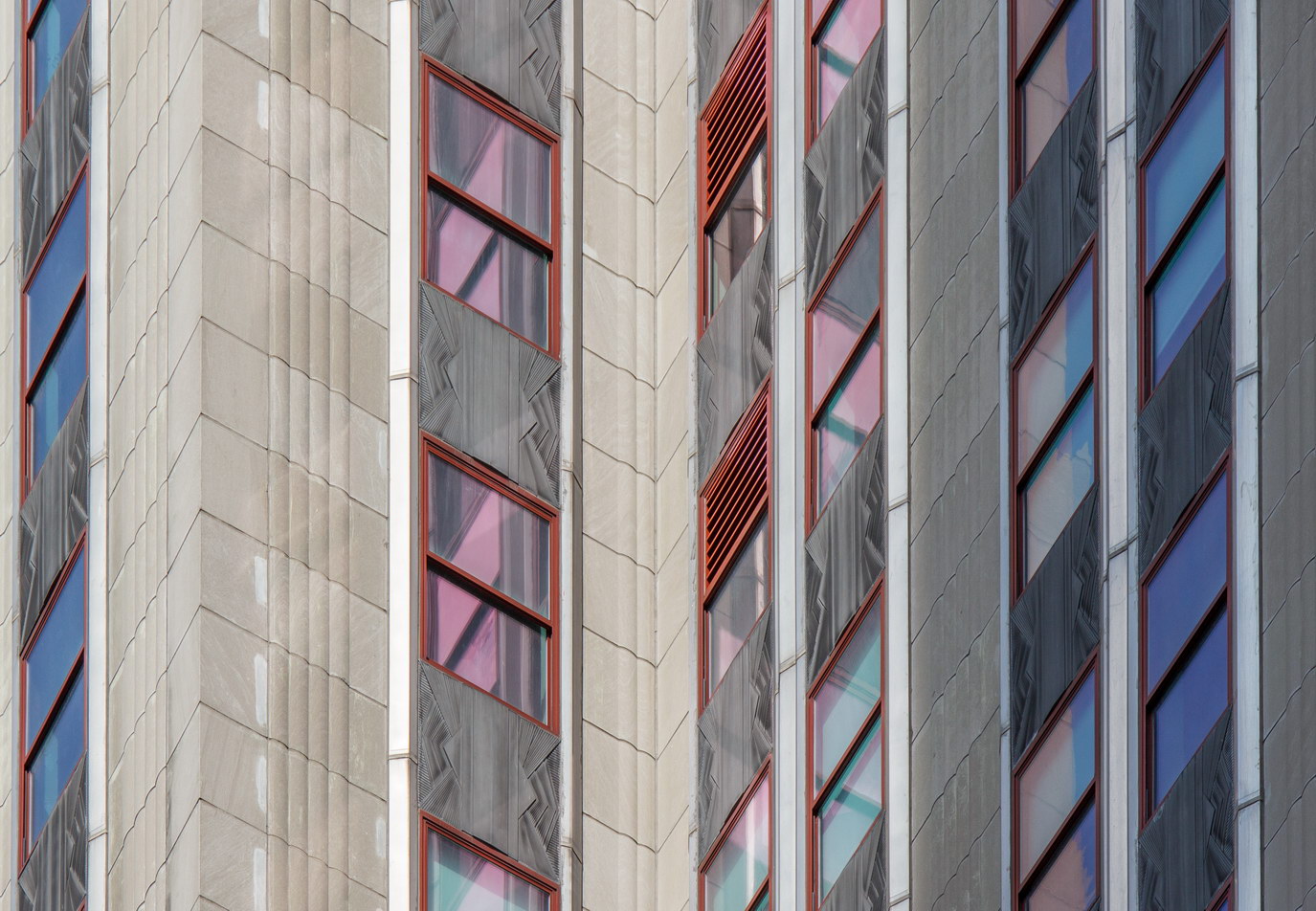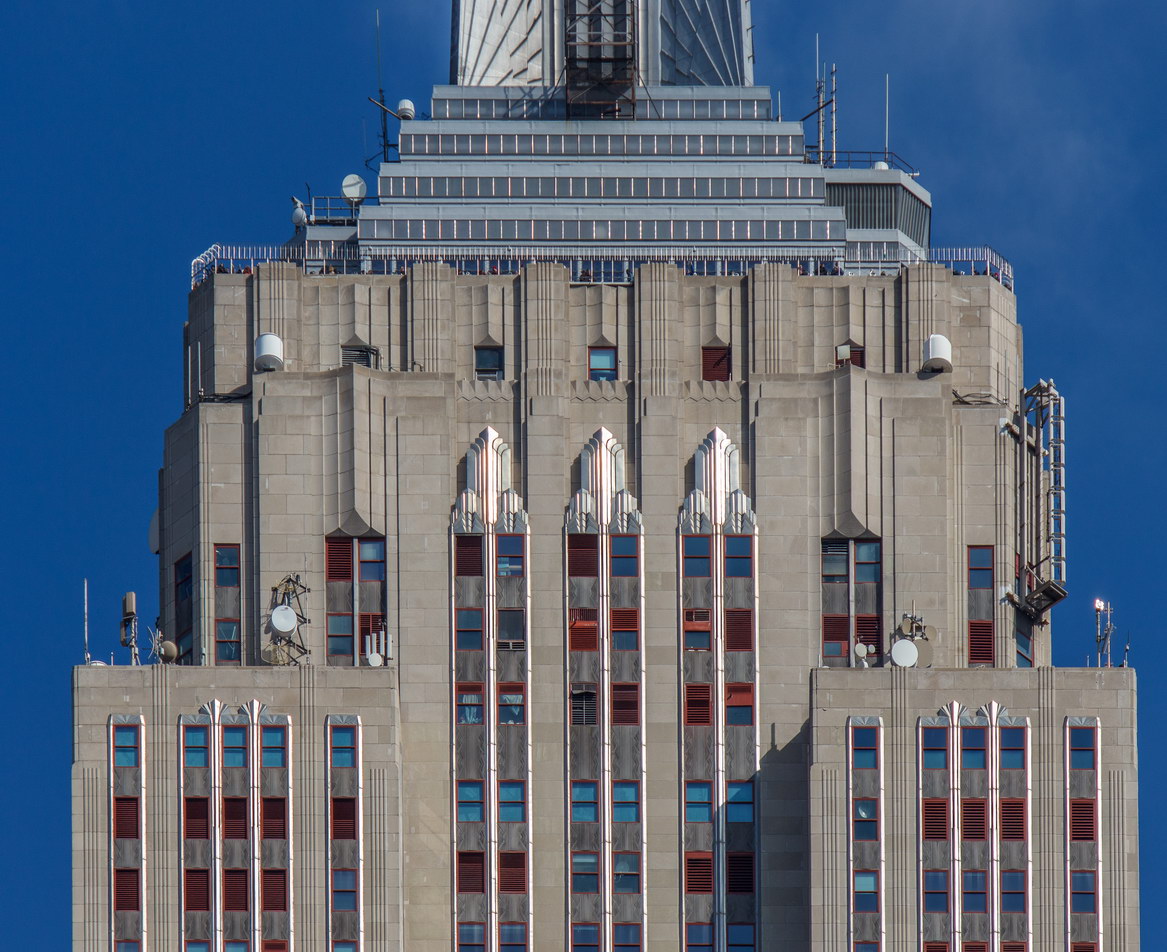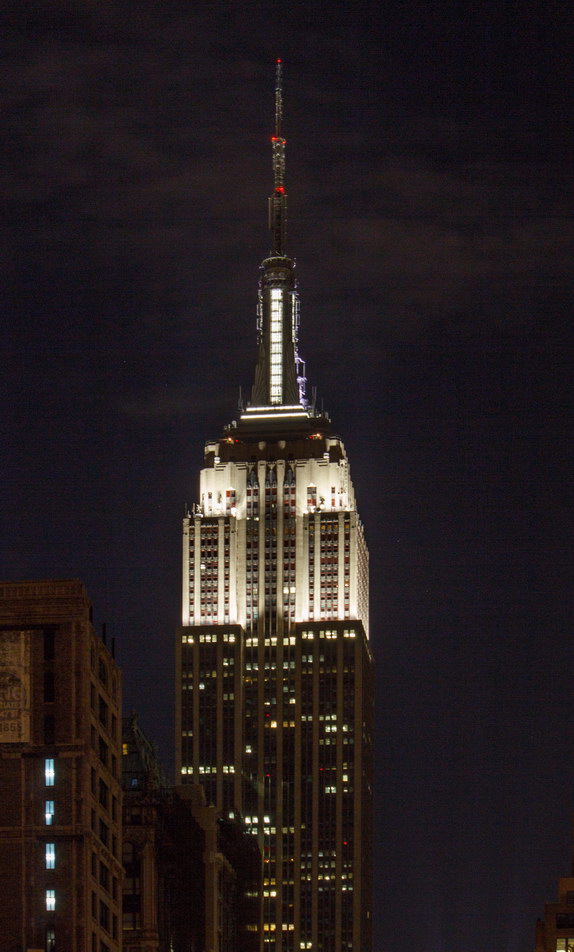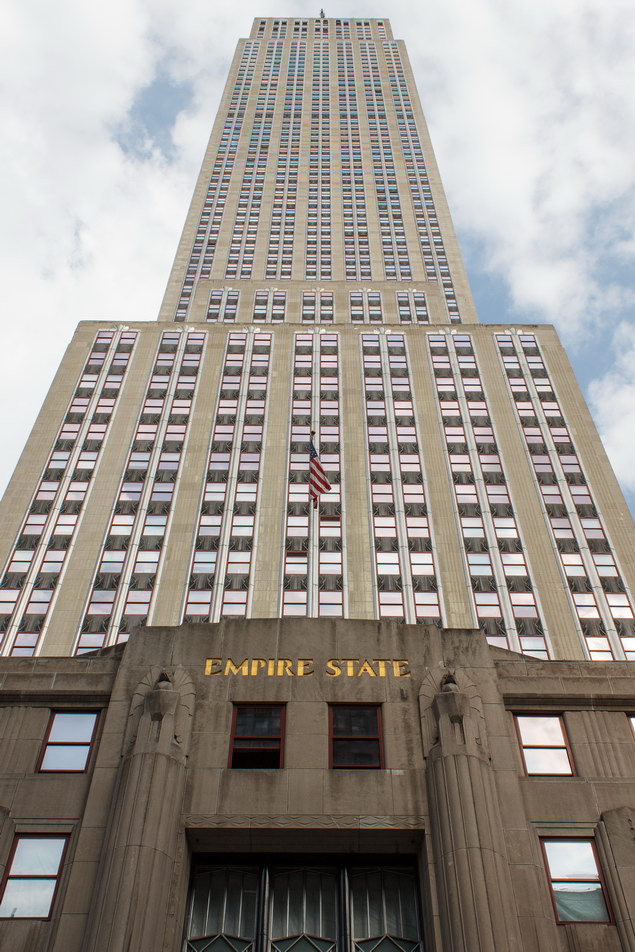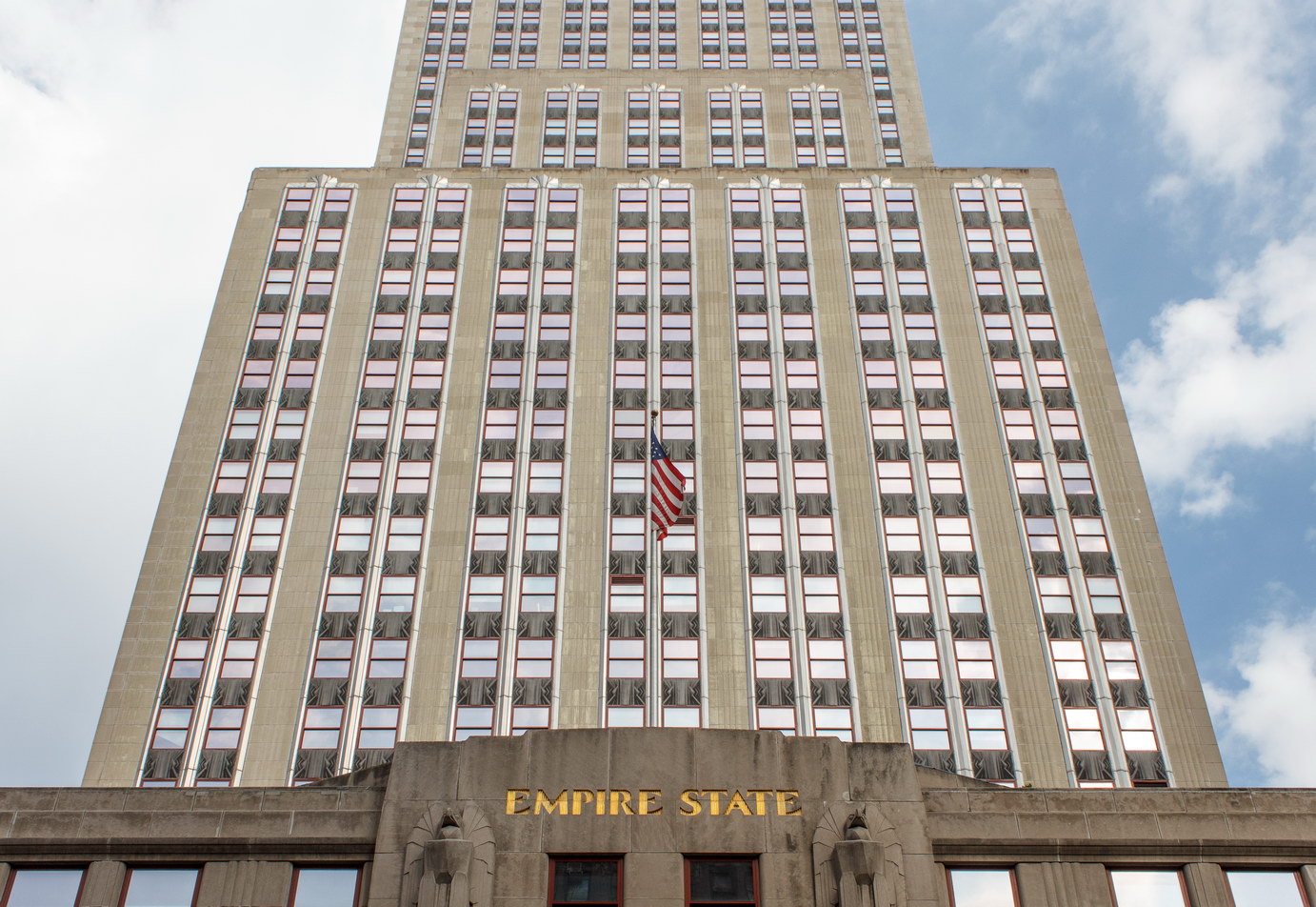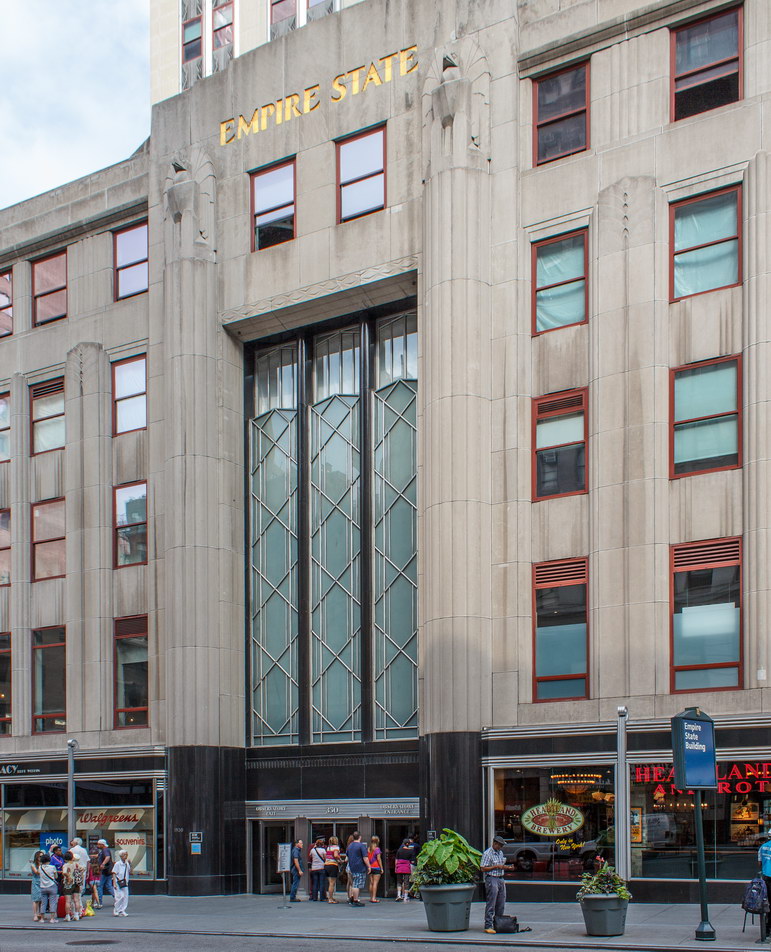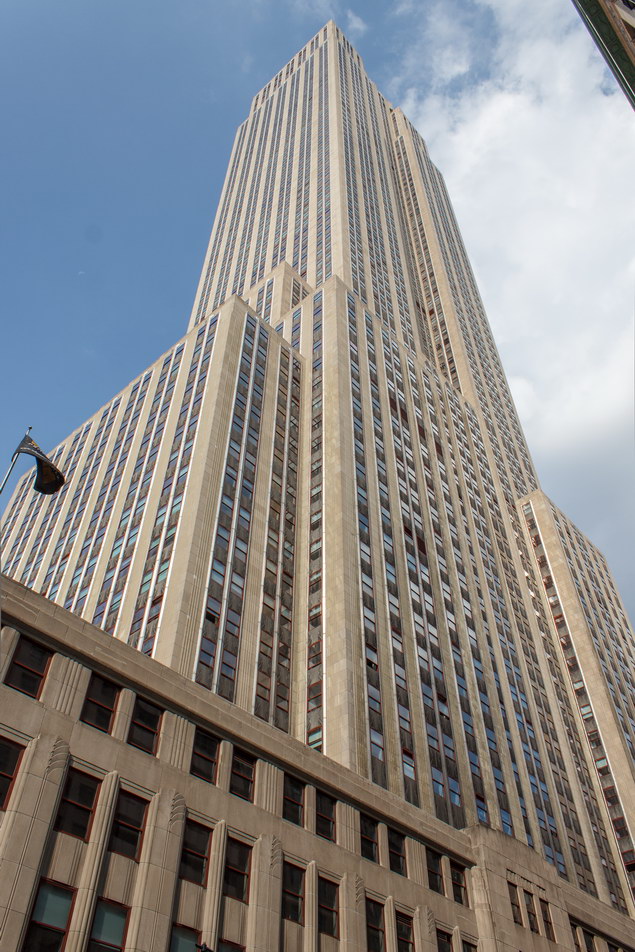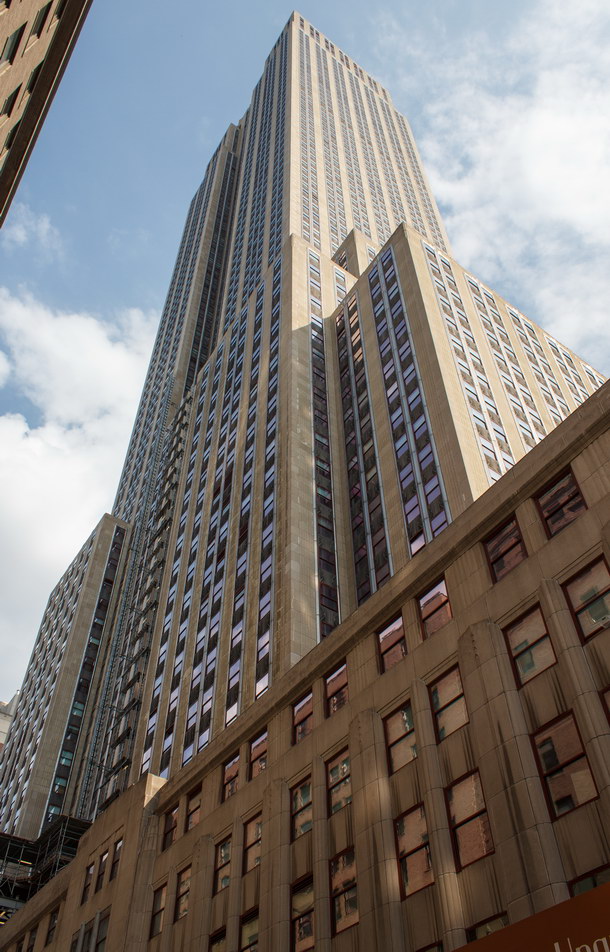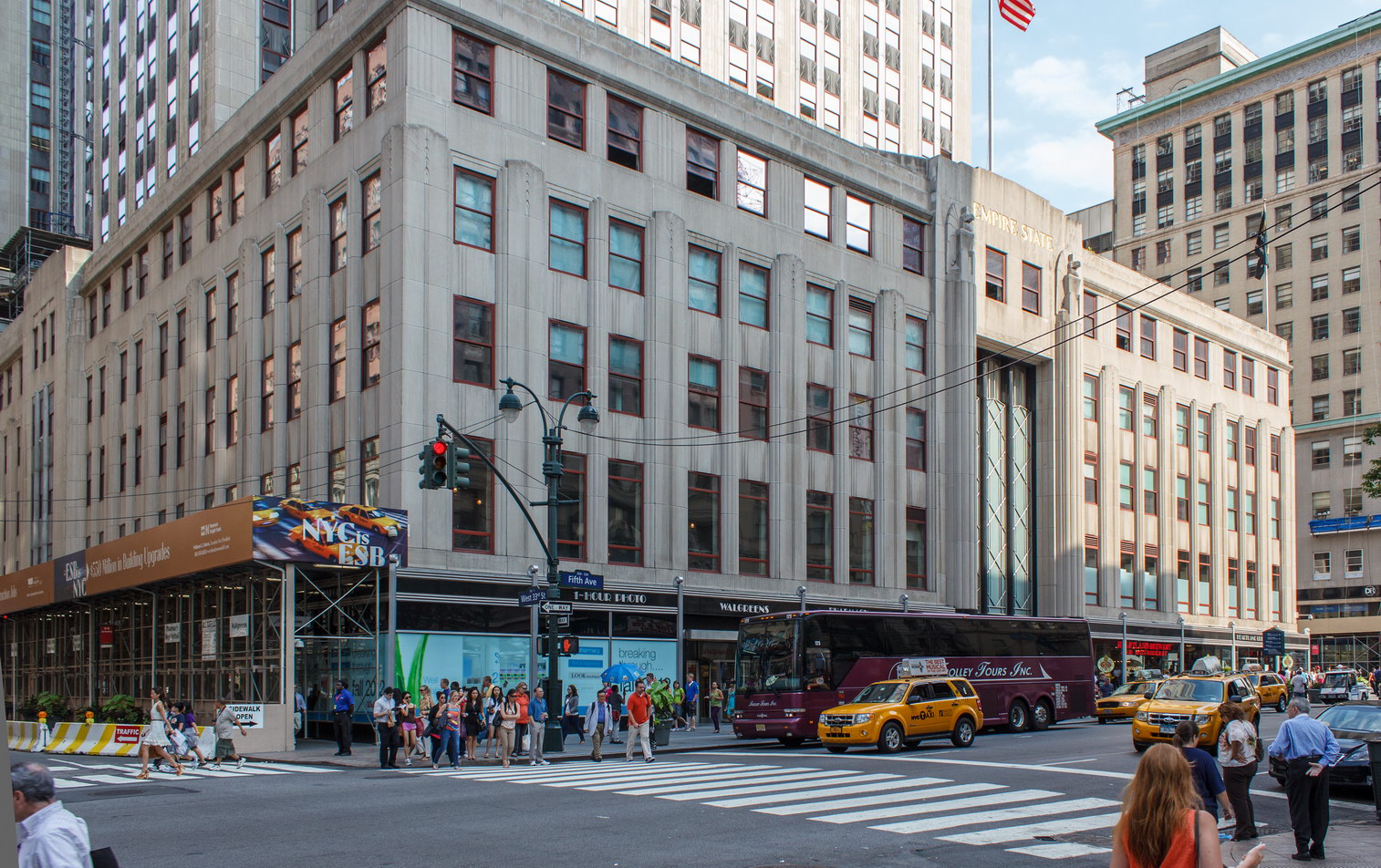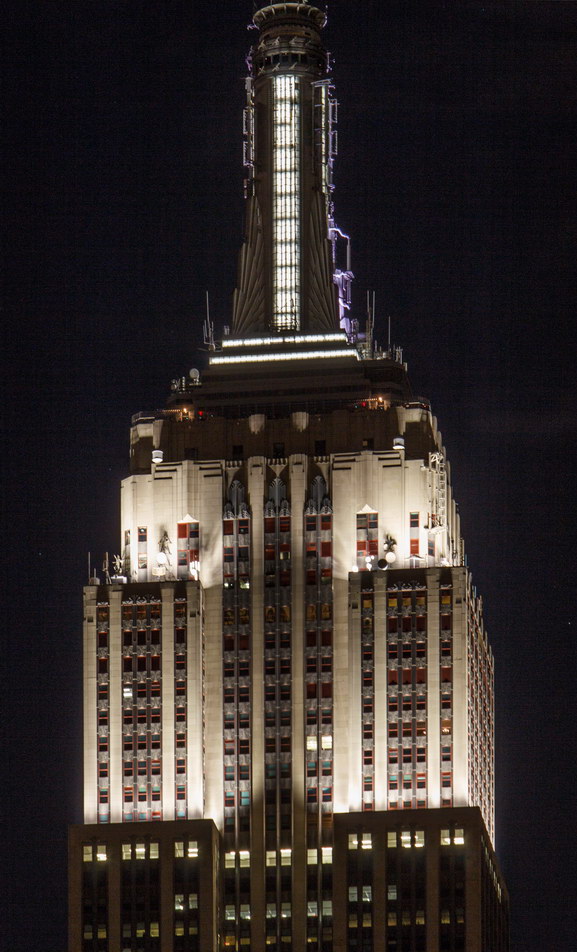The Empire State Building is still New York City’s most-visited landmark, even though it lost “world’s tallest skyscraper” title in 1972. The building claims four million visitors a year to its 86th and 102nd floor observatories; the building reputedly makes more money from observatory ticket sales than from rents.
Books have been written about the Empire State Building (one of the best is linked below) – we’ll just hit the highlights here:
- The land under the Empire State Building is part of a six-square-block tract that the City sold to John Thompson for $2,600 in 1799. He farmed the land, and sold it for $10,000 in 1825. Two years later William B. Astor bought the farm for $20,500. In 1859 and 1862 the Astors built two mansions on the plot now occupied by the Empire State Building. In 1893 and 1897 those mansions were demolished to make way for the Waldorf Hotel and Astoria Hotel, which were operated jointly as the Waldorf-Astoria. In 1928 the Bethlehem Engineering Corporation bought the properties for $20 million.
- General Motors executive John J. Raskob set up The Empire State Corporation in 1929, with four-time New York Governor (and Democratic presidential candidate) Al Smith as President.
- It took five months to demolish the Waldorf-Astoria Hotel; two months to excavate the site for construction; 13 months to build the Empire State Building.
- Architects Shreve, Lamb and Harmon produced drawings for the Empire State Building in just two weeks – based on their earlier designs for the Reynolds Building (Winston-Salem, NC) and Carew Tower (Cincinnati, OH).
- Under budget: The Empire State Building was erected in less time (13.5 months vs 18 months) and for less money ($24.7 million vs $43 million) than budgeted.
- President Hoover officially opened the Empire State Building by pushing a button in Washington, D.C. on May 1, 1931. (May 1 was the traditional lease-signing day in New York City.)
- Bad timing: The building opened during the Great Depression, and for years was derided as the “Empty State Building” for lack of tenants.
- Lights: The Empire State Building has always used lights to attract attention. A November, 1932 beacon celebrated the election of Franklin D. Roosevelt as President. In May, 1956, four “Freedom Lights” beacons were installed. In 1964 the building installed floodlights, commemorating the New York World’s Fair. In November 2012, the Empire State Building switched on LED lights, replacing the floodlights.
- 1933: “King Kong” is released.
- 1945: An Army Air Force B-25 bomber en route to Newark swerved to miss the fog-shrouded Chrysler Building – and crashed into the 79th floor of the Empire State Building.
- 1950: The Empire State Building grew 217 feet via a new broadcast antenna, after the FCC ordered an end to NBC’s exclusive use of the tower.
- 1978: First Annual ESB Run-Up competition. Record time: 9 minutes, 33 seconds from ground floor to 86th floor.
Empire State Building Vital Statistics
- Location: 350 Fifth Avenue between W 33rd and W 34th Streets
- Year completed: 1931
- Architect: William F. Lamb of Shreve, Lamb, and Harmon
- Floors: 102
- Style: Art Deco
- New York City Landmark: 1981
- National Register of Historic Places: 1982
Empire State Building Recommended Reading
- Wikipedia entry
- Wikipedia entry Reynolds Building – prototype for Empire State Building
- Wikipedia entry Shreve, Lamb and Harmon (architects)
- NYC Landmarks Preservation Commission designation report
- Great Buildings listing
- Empire State Building website
- Architecture Record article (lobby makeover)
- Failures: Empire State Building (bomber crash into ESB, July 28, 1945)
- Book: EMPIRE STATE BUILDING: The Making of a Landmark
by John Tauranac
